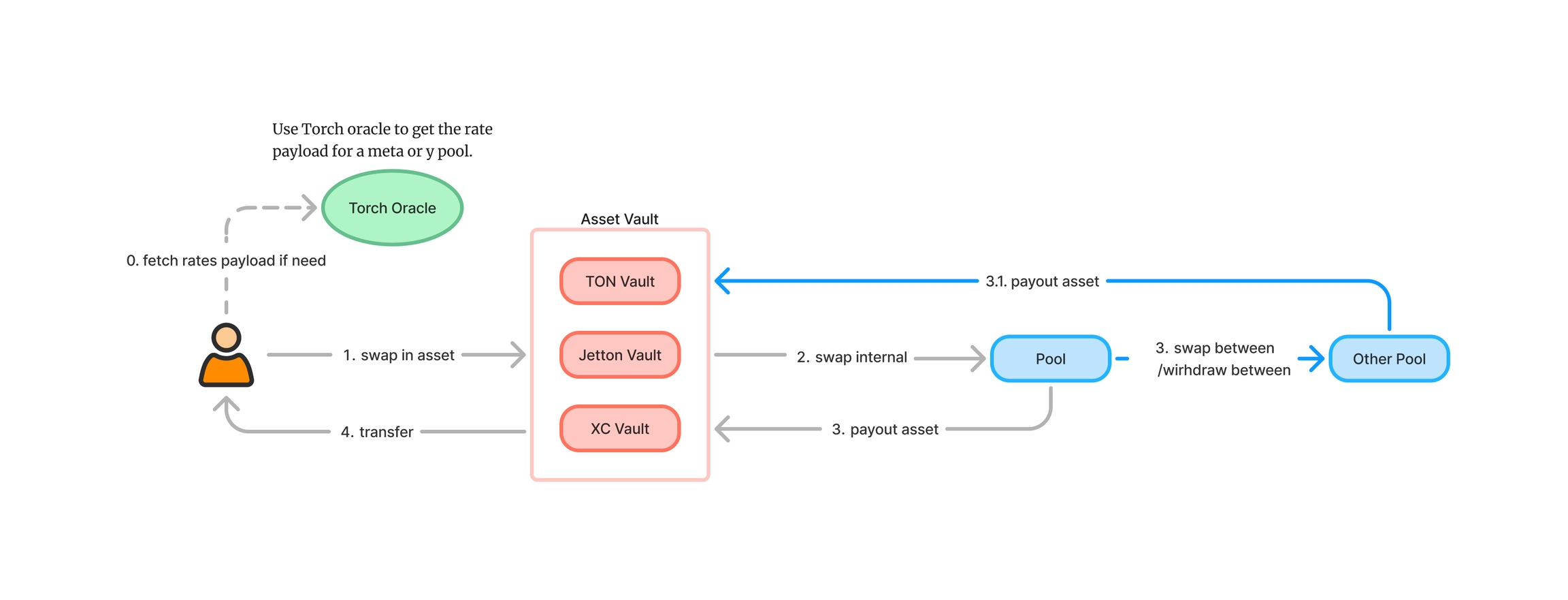Swap

Torch’s Stable Swap mechanism effectively reduces slippage during swaps, providing a more cost-efficient trading experience. Below is a detailed breakdown of the swap process:
Asset Transfer to Vault
Users transfer the asset they wish to swap (swap in asset) to the corresponding Vault contract.
Vault Notifies Pool
Once the Vault receives the asset, it sends an
op::swap_internalmessage to the Pool contract, initiating the swap calculation.
Pool Calculates and Notifies Vault
After the calculation, the Pool determines the amount of the swap out asset and sends an
op::payoutmessage to the Vault responsible for the swap out asset.The Vault then transfers the swapped asset to the user’s designated address as instructed.
Cross-Pool Swap Operations
If the swap involves cross-pool operations, the Pool includes swap details and sends an
op::swap_betweenorop::withdraw_betweenmessage to the next Pool to continue the swap process.A detailed explanation of cross-pool operations will be provided in the following sections.
Last updated